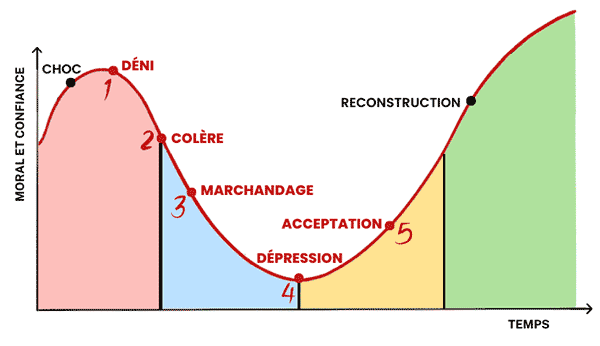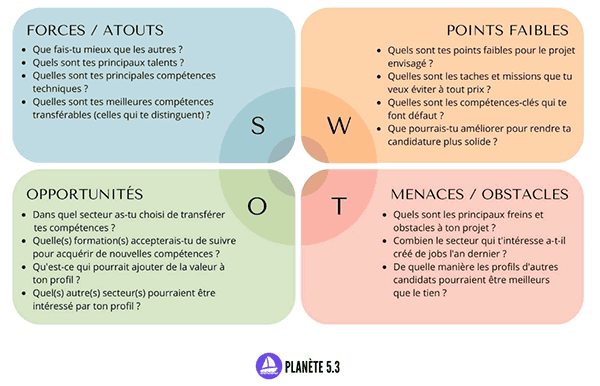
The coupe version of Volkswagen’s electric SUV is finally here. This is an opportunity to try this cousin of the ID.4 with sportier lines in its most efficient version with nearly 300 hp. Is that enough to make this ID.5 GTX a sporty model?
Car tested: Volkswagen ID.5 GTX
|
From€57,950
€2,000 bonus
|
Here is finally the time of the launch of the model crowning the ID range. 100% electric models that hold a special place in the Volkswagen catalog, with a very recognizable specific design. We discovered this ID.5 in the summer of 2021, which is the cut version of the ID.4. Coupe SUVs are a way to enrich the range at lower cost, and the VW group does not hesitate with the Audi Q4 Sportback e-tron, Skoda Enyaq Coupe and now, therefore, the ID.5. With its reworked shields, its large 19 or 20-inch wheels and its receding silhouette underlined by the black roof, the whole thing looks great but remains quite massive visually. The dimensions of the car are very close to those of the ID.4, just 2 cm longer (4.60 m).
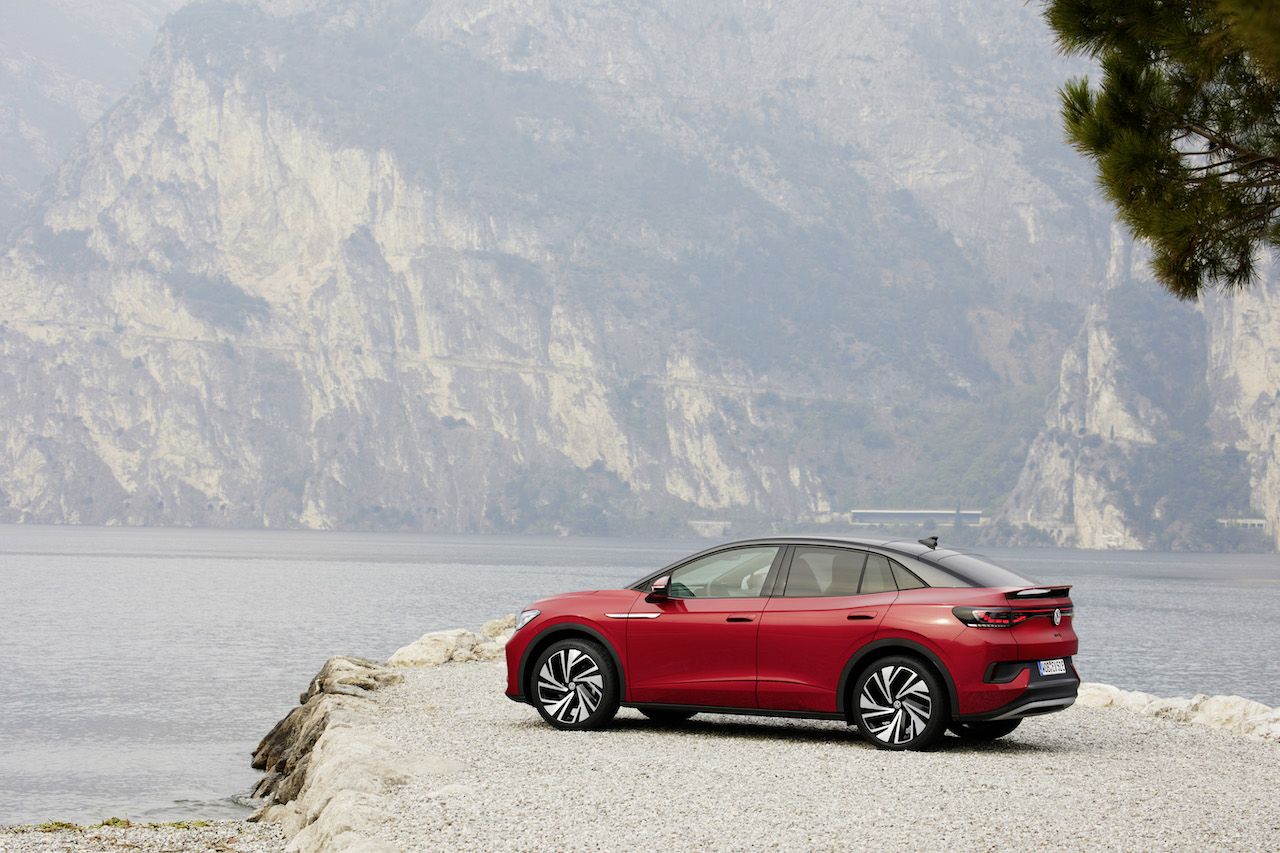
Equipped with the large 77 kWh battery, the ID.5 is offered with three power levels: 174 hp (Pro), 204 hp (Pro Performance) and 299 hp for the all-wheel drive GTX version, strong with an engine. permanent magnet synchronous house at the rear, asynchronous at the front, supplied by Magna. Enough to ensure a leading technical sheet for this top-of-the-range model.
Volkswagen ID.5 GTX Price
With an entry ticket set at €51,450, the ID.5 is positioned much higher than the ID.4 from which it derives. This represents a jump of €10,000 (excluding bonuses) compared to the entry price, with more modest battery and motor, and €3,500 more than the equivalent GTX version, knowing that the ID.5 includes some equipment in more. Unfortunately, at this price level, the aid from the ecological bonus is limited to €2,000.
In the GTX version, the price rises to €57,950, a tidy sum for a non-premium vehicle. Fortunately, the standard equipment of the ID.5 range is very complete, with for example navigation, heated seats and adaptive cruise control. But residents of colder regions will also have to go through the list of options in order to add a heat pump, which is very useful for optimizing heating consumption (€1,100).
Autonomy and recharge time of the ID.5
With a well-known MEB platform and useful 77 kWh battery, the ID.5 will not be able to create great surprises in terms of its autonomy. We found during our test an average consumption on the road of around 19 kWh, allowing you to easily cover 400 km in quiet driving, while this version is given for 489 km of WLTP autonomy (513 km in the Pro variant). On the motorway, it will logically be necessary to reduce its ambitions and cross your fingers to find functional high capacity terminals. On this GTX version, the maximum DC charge is 150 kW (135 kW on the Pro versions), allowing a theoretical recharge of 5 to 80% in just 36 minutes, while it will take 7 h 30 on an AC terminal of 11kW.
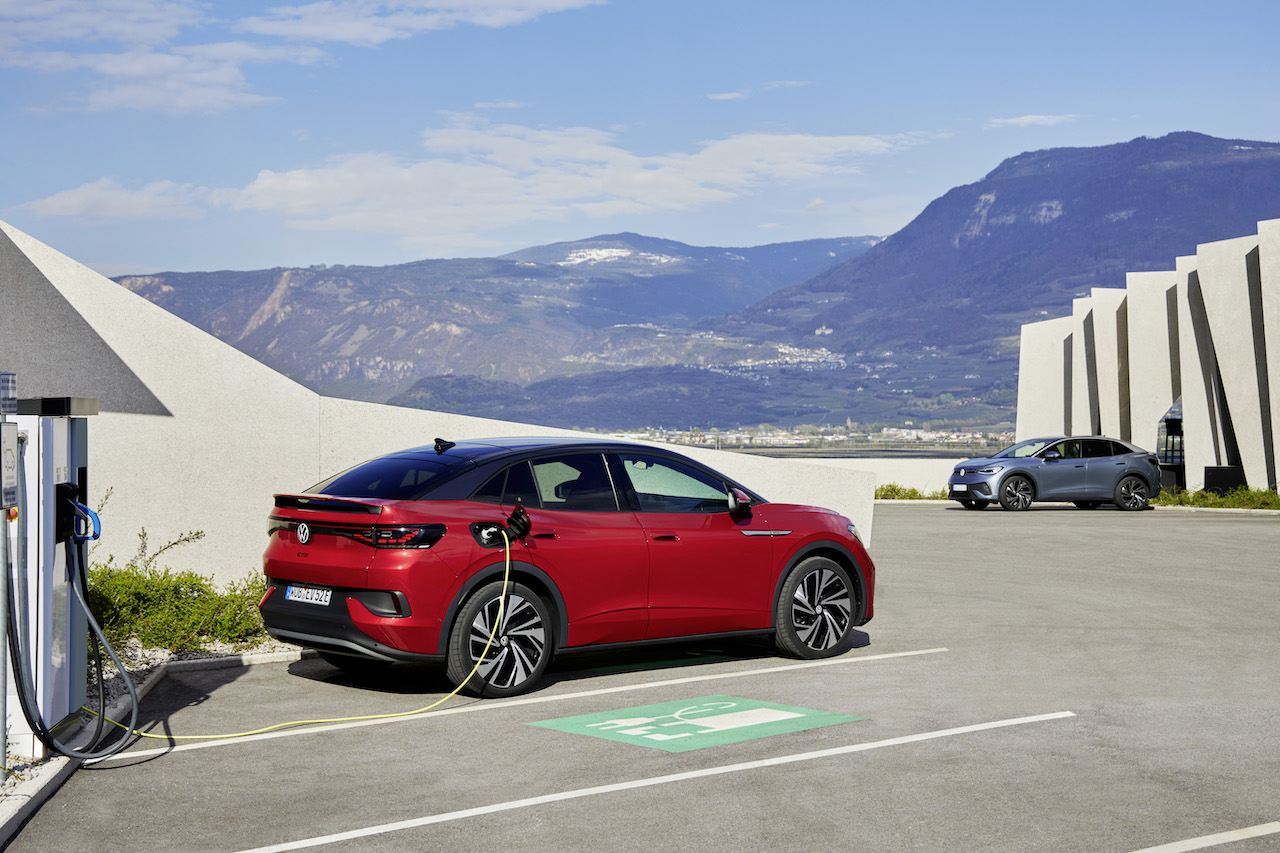
Subsequently, Volkswagen will launch a new Plug & Charge feature which, like what Tesla is doing, will allow the terminal to automatically recognize the car, without the need to use a charging card. The user’s account will then be directly debited. The ID.5 also inaugurates bidirectional charging which offers, when possible and the car unused, to reinject energy into the electrical network. Finally, the ID.5 sports a new intelligent route planner with the latest version of the ID 3.1 on-board software.
Driving
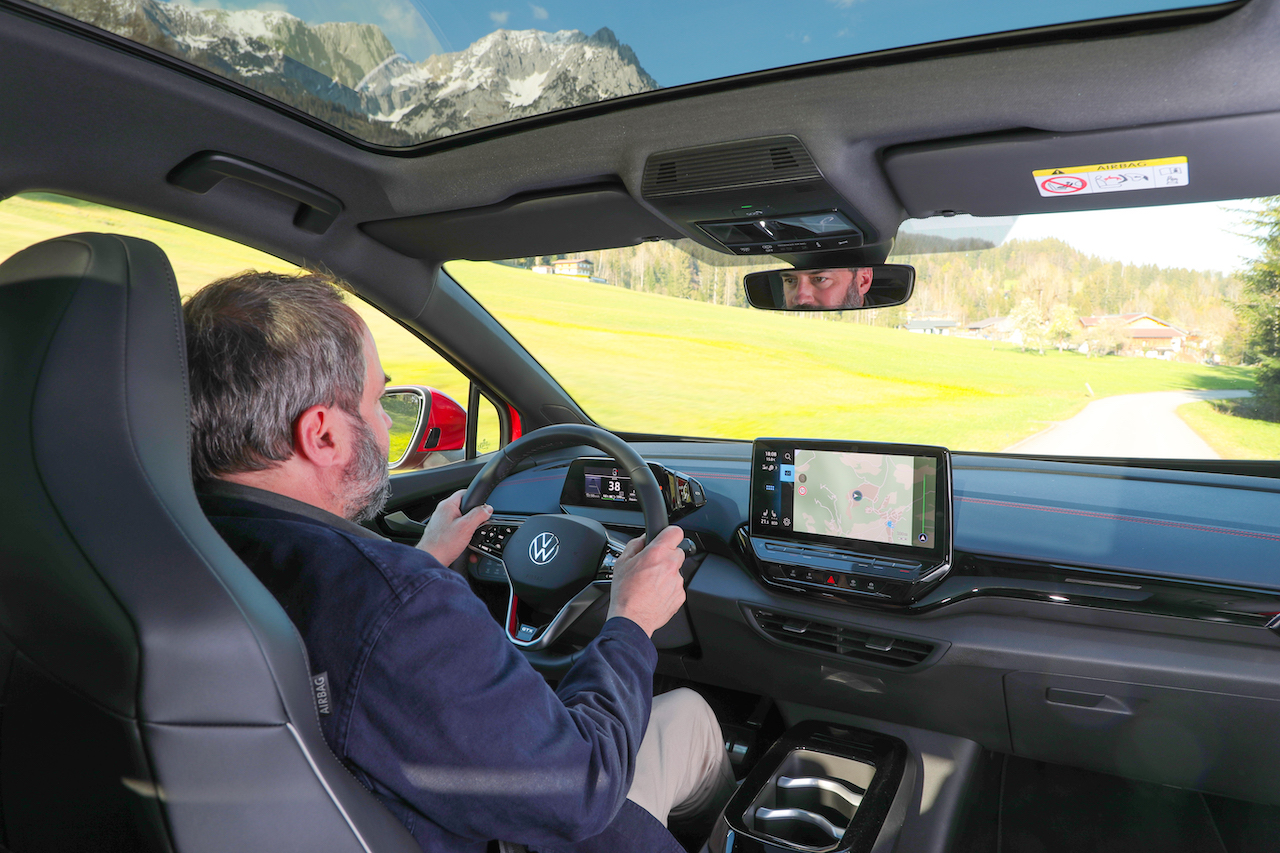
With 299 hp distributed over the four wheels and a torque of 460 Nm, one could expect rather sporty performances, in harmony with the treatment of the bodywork (aggressive shields, integrated spoiler). Alas, even if on paper a 0 to 100 km/h in 6.3 s is a good figure in absolute terms, the ID.5 GTX does not give the impression of sticking its passengers to the seats. However, after an initial reaction of disappointment, you quickly realize that the essential is there: very generous times allowing you to overtake in the blink of an eye, flawless motor skills and above all preserved comfort.
That said, make no mistake. As for the models badged R Line, S Line and other sports labels which are so successful, it is more a question of taking care of appearances than of playing real radical cars, even if here the mechanical definition is more robust. And that corresponds well to the spirit of the car, which offers remarkable comfort, barely disturbed by rather present rolling noises. Mode B allows the level of regeneration to be reinforced when lifting the foot for a smooth ride from turn to turn, but this remains much lower in power than what is found in some competitors.
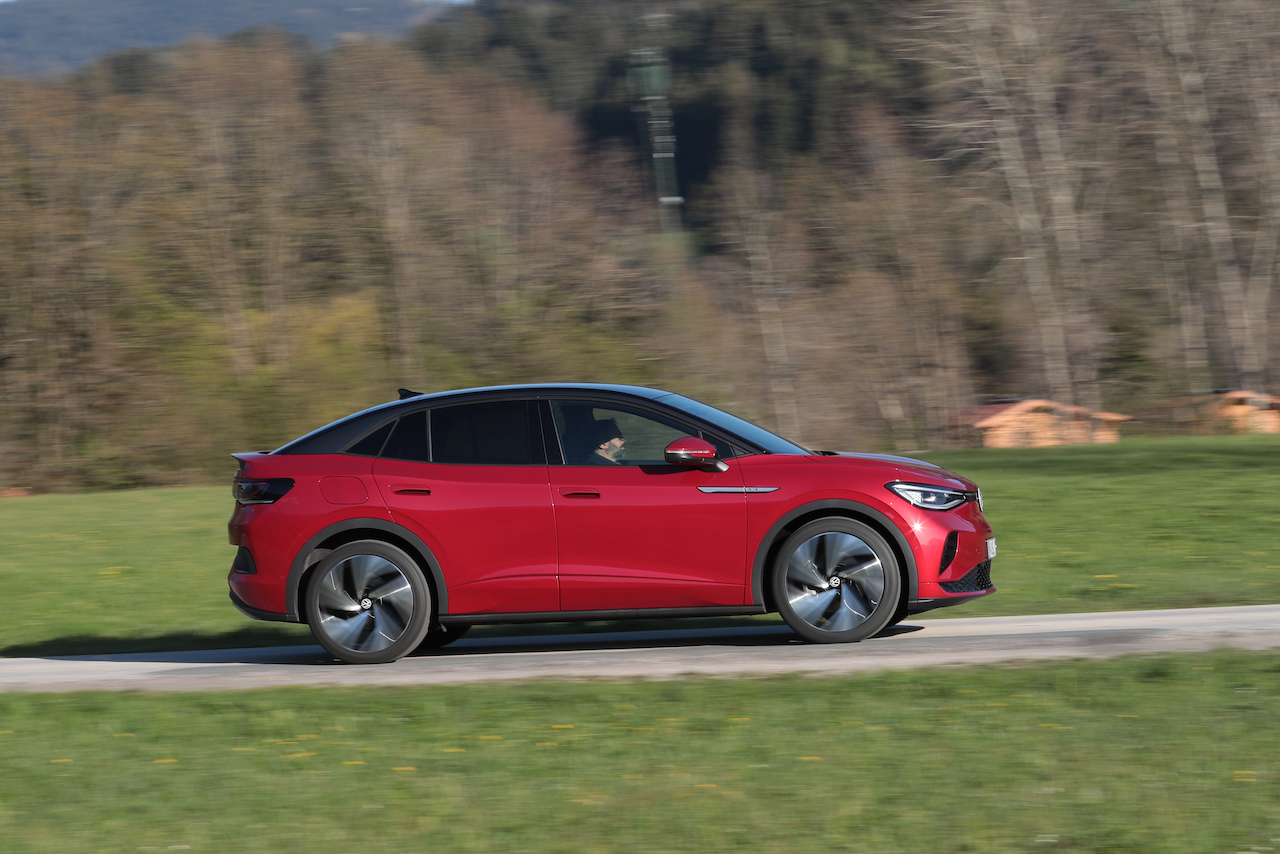
Our test car, equipped with the active suspension and big 21-inch wheels always proved kind to our vertebrae, ensuring a very comfortable journey on quality roads through the Austrian Alps, even in Sport mode. No question there of increasing the pace too much, radars being omnipresent in the magnificent landscapes crossed. The uneventful behavior of the heavy VW SUV (more than 2.2 t!) is appreciable. But, on this level also, no sportsmanship in sight. And, although the brake pedal attack lacks consistency, its dosage remains precise.
More embarrassing, the transplant of the front engine harms the good maneuverability appreciated on the other versions: from only 10.20 m in turning diameter, we go to 11.57 m for our GTX version. Maneuvers can be made easier by the new automatic parking system with memory, capable of retracing the same route on its own from a selected GPS point. For example, in front of the entrance to his garden. A practical function, already seen at BMW, but with limits in the event of bad weather. Since cameras are used to secure maneuvers, they will prohibit this function if their visibility is reduced.
On board
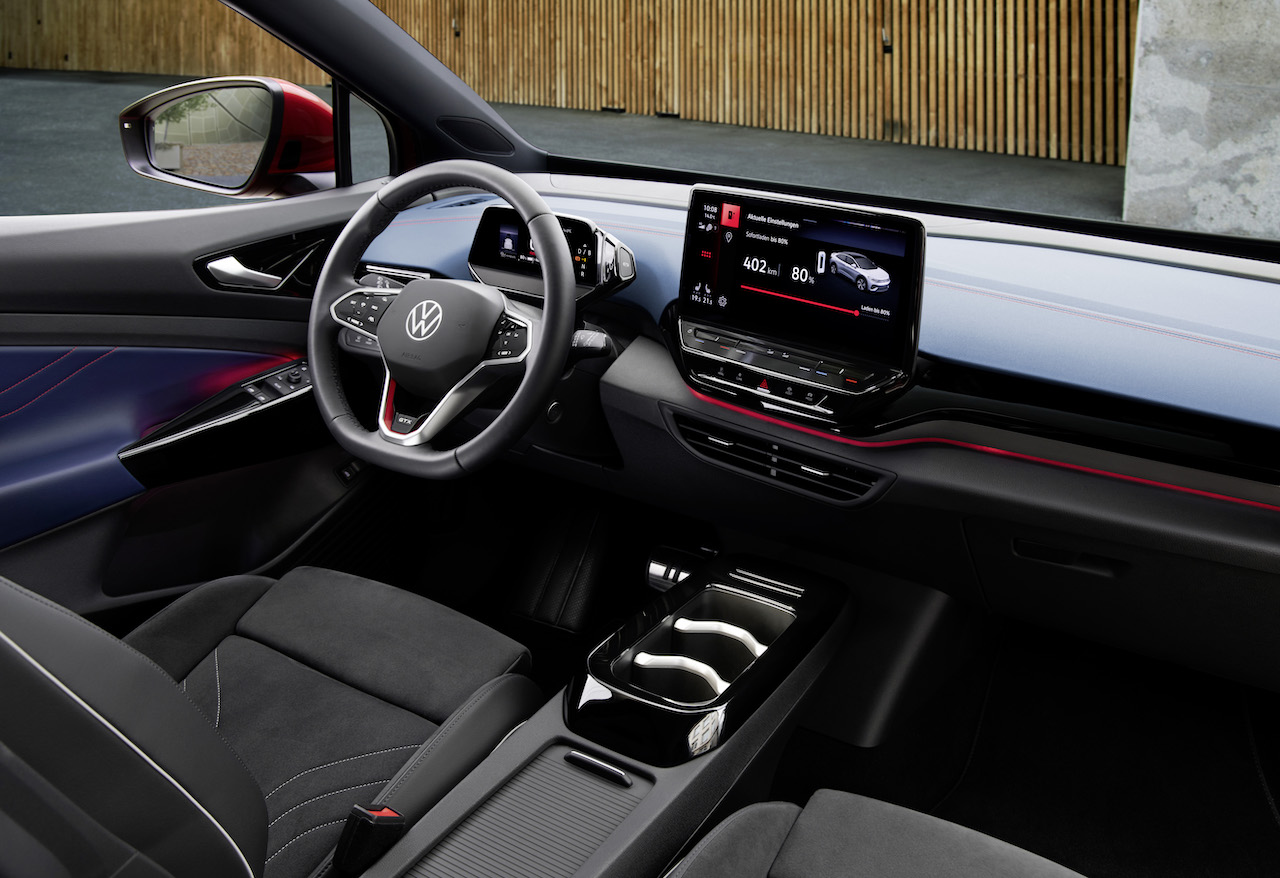
The dashboard is taken from the ID.4 and incorporates the large 12-inch screen as standard with the Discover Pro Max system.
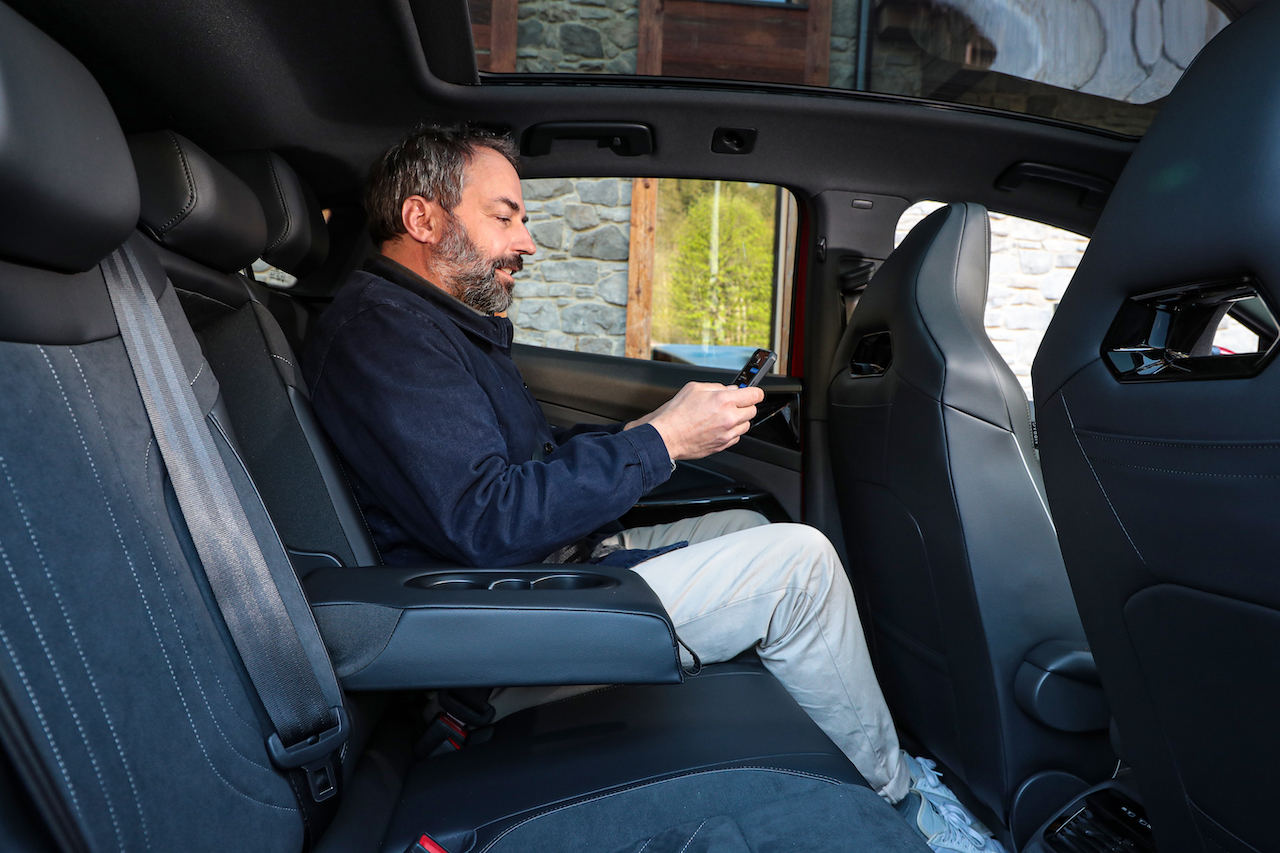
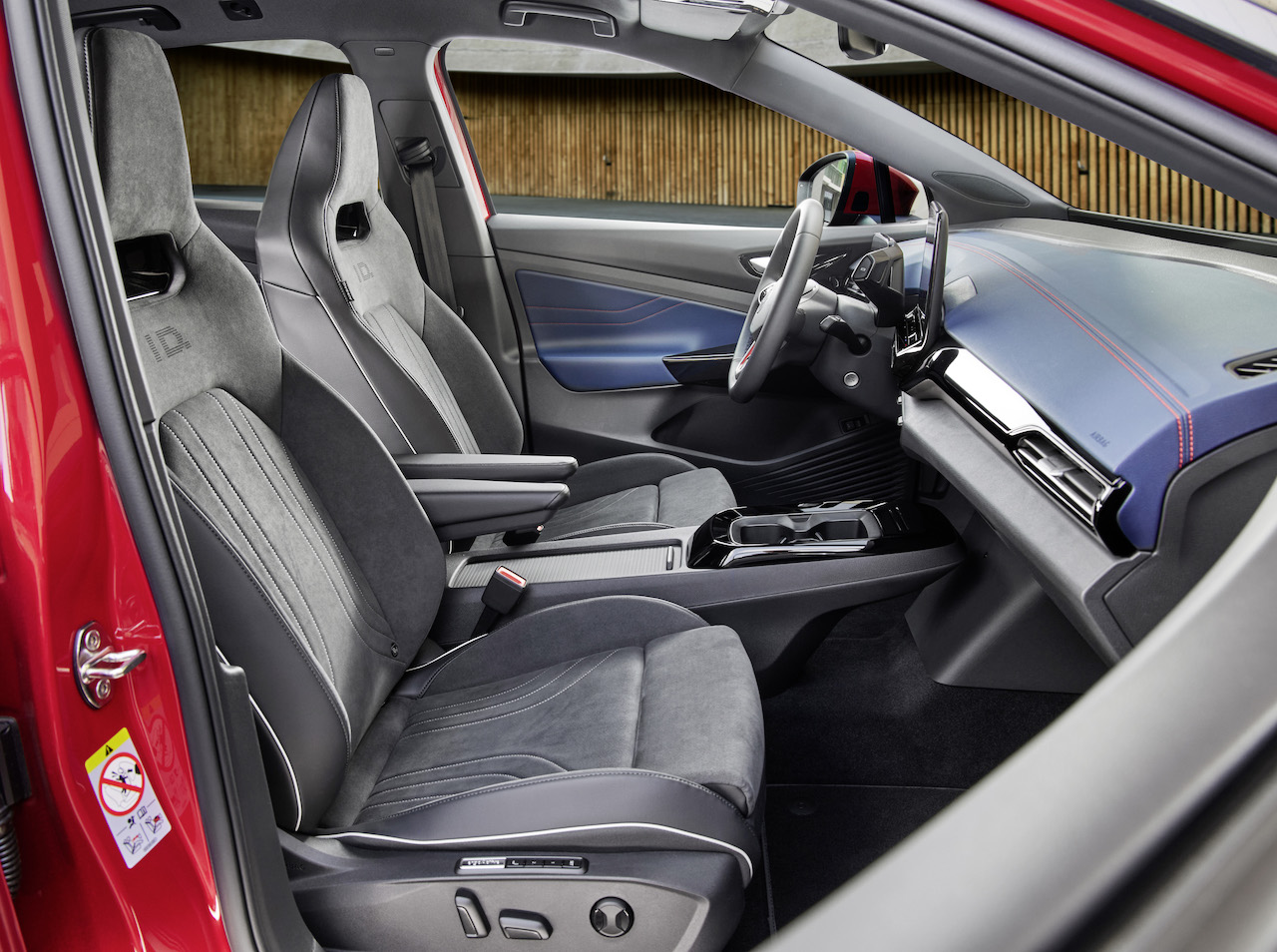
Do you know the interior of the ID.4? Then you know the ID.5 one! Unsurprisingly, the very simplified dashboard and the layout of the vast interior of the electric SUV signed VW are carried over here, with just a few presentation details for our GTX version with a black theme with red stitching. This does not compensate for the many too basic plastics at this price level, even if the assembly quality remains very satisfactory.
We therefore find comfortable front seats, large glass surfaces letting in a lot of light, ubiquitous storage and… screens with quickly annoying ergonomics, including in the latest evolution of the on-board system (3.1), updated from a distance. Too many sub-menus complicate the handling of the infotainment system. The new voice functions are triggered inadvertently, and the sensitive buttons on the steering wheel sometimes lack responsiveness.
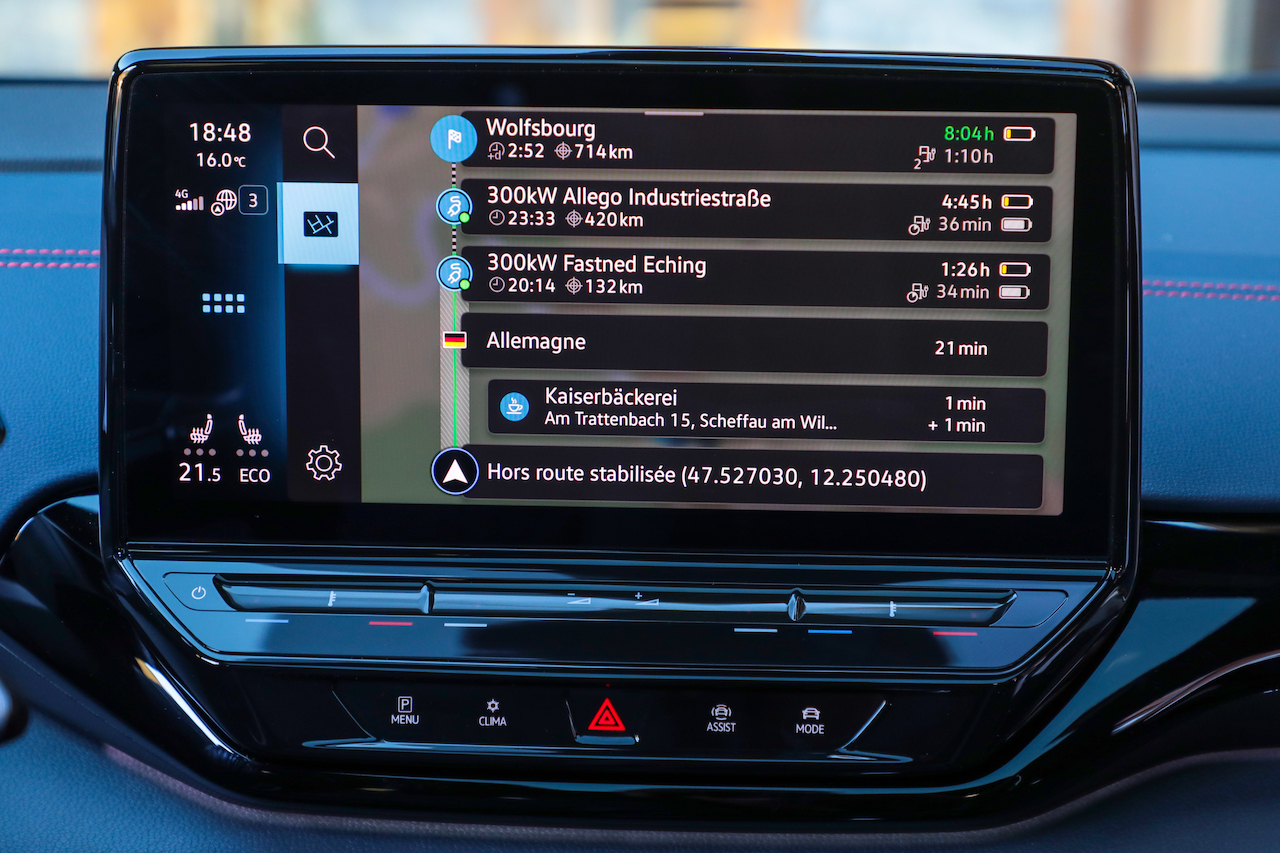
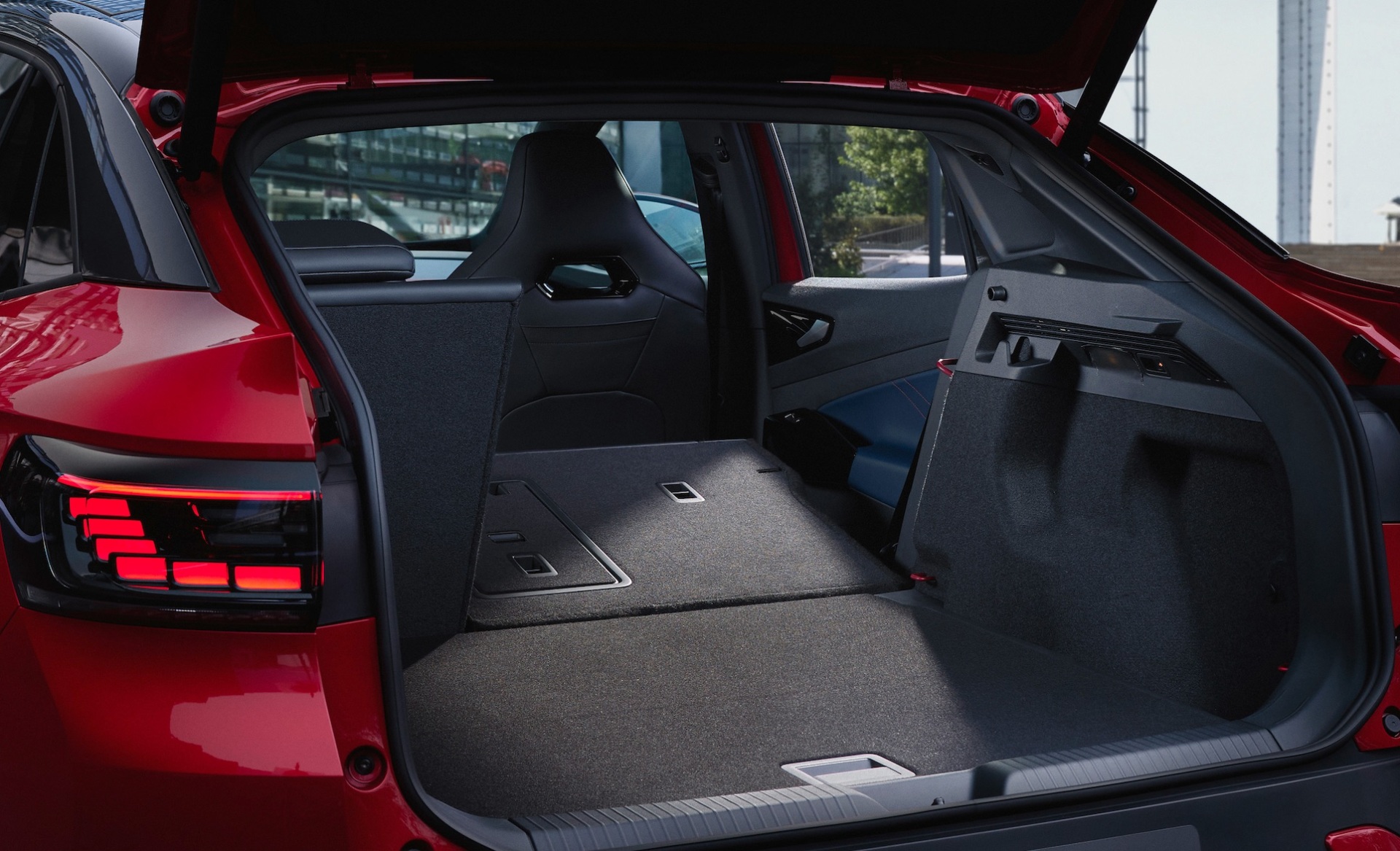
The dedicated architecture of the MEB electric platform optimizes the space available with a flat floor and, for rear passengers, plenty of legroom and headroom thanks to a reduced headroom of only 12 mm compared to that of the ID.4. The trunk does not suffer either from the transition to a coupe body, with nearly 550 l announced. Enough to allow the ID.5 to retain all the advantages of the family SUV on which it is based.
Competetion
There is no shortage of electric SUVs playing coupes with a flowing roofline on the market. Starting with the VW group models: Audi Q4 Sportback e-tron and Skoda Enyaq Coupé, both with higher prices for equal motorization and battery. A little more efficient and enduring, the Kia EV6 also offers a slightly higher price in its GT Line AWD 325 hp version (€59,790).
As for the Ford Mustang Mach-E range, certainly more dynamic, the 76 kWh and 269 hp AWD model is displayed at €63,500, or €5,500 more than the VW. Finally, the Tesla Model Y, also more greedy on the price side (€62,990), offers more power, autonomy and trunk volume, adding a unique asset with the brand’s precious charging network.
Discover the results of the test and the technical sheet on the following page.



